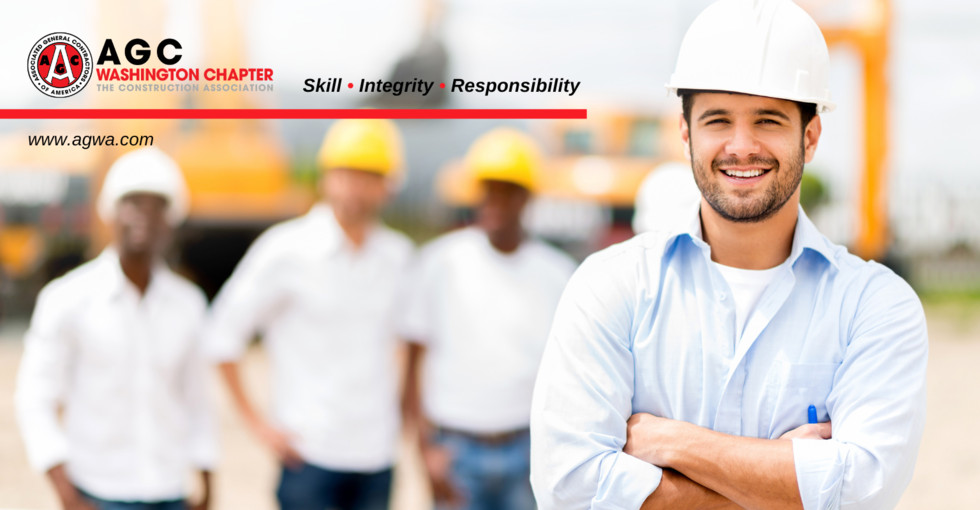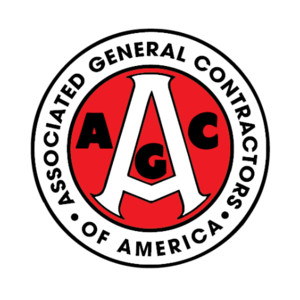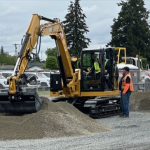Safety Toolbox: Essential Safety Equipment for Every Washington Construction Worker
 In the ever-evolving construction industry, the safety and well-being of our workers remains an unwavering priority. At AGC of Washington, we continually advocate for robust safety practices that can safeguard jobsite personnel against preventable accidents. An integral part of our mission is ensuring every construction professional understands the importance of proper safety gear. This is not just about compliance with regulations, but about fostering safe environments that enable our community members to thrive and succeed.
In the ever-evolving construction industry, the safety and well-being of our workers remains an unwavering priority. At AGC of Washington, we continually advocate for robust safety practices that can safeguard jobsite personnel against preventable accidents. An integral part of our mission is ensuring every construction professional understands the importance of proper safety gear. This is not just about compliance with regulations, but about fostering safe environments that enable our community members to thrive and succeed.
Every construction worker, regardless of their unique role, needs a collection of essential safety equipment—a “Safety Toolbox” of sorts. This collection acts as a crucial buffer against the inherent risks within construction sites, protecting workers from dangers ranging from falls and flying debris to excessive noise and respiratory hazards.
1. Hard Hat
Hard hats are a symbol of construction sites and for a good reason. Falls, flying or falling objects, and accidental contact with electrical hazards pose real risks. A hardy helmet can help protect against head injuries, so ensure it meets the ANSI Z89.1-2009 standard for impact and penetration resistance.
2. Safety Glasses
Eye injuries can severely impact a worker’s life, making protective eyewear non-negotiable. Safety glasses or face shields should be used whenever there are risks from flying particles, chemicals, or harmful light radiation. Ensure your eyewear meets the standards outlined by ANSI Z87.1—they’re designed to shield eyes effectively.
3. High Visibility Clothing
Given the bustling nature of construction sites, high-visibility clothing is key to preventing accidents. These brightly colored garments with reflective materials ensure workers are noticeable, even in adverse light conditions or when hidden in blind equipment spots.
4. Safety Footwear
Construction sites involve a lot of moving—sometimes across uneven or slippery surfaces. A sturdy pair of safety shoes, specifically ones with puncture-resistant, slip-resistant soles, and toe protection, can prevent foot injuries from falling materials or stepping on sharp objects.
5. Safety Harness
For those working at heights, a full-body harness is fundamentally important. A safety harness can protect against falls, a leading cause of fatalities on construction sites. These harnesses must comply with the specification EN 361 and are inspected and cared for as per manufacturer guidelines.
6. Gloves
Hands are constantly in action on construction sites, and the right pair of gloves can guard against multiple risks, including cuts, abrasions, burns, extreme temperatures, and chemical exposure. Depending on the specific activity, it’s important to use the right type of protective gloves—whether they need to be cut-resistant, heat-resistant, insulated, or chemically protective.
7. Ear Protection
With the constant noise on construction sites, workers are often at risk of damaging their hearing. Ear protection, like earplugs or earmuffs, can go a long way toward preventing noise-induced hearing loss. Follow the guidelines from the Occupational Safety and Health Administration (OSHA) to ensure the effectiveness of these protective devices.
8. Respiratory Equipment
Respiratory protection is necessary when workers are exposed to harmful dust, smoke, gases, sprays, or vapors. From simple masks to complex respirators, the right equipment minimizes the risk of respiratory problems. Be sure to adhere to NIOSH-approved standards for respiratory protection.
Safety is more than a protocol—it is a mindset we believe in and advocate continuously. Ensuring that every Washington construction worker has and uses the appropriate safety gear is fundamental to maintaining our industry’s integrity in safety standards. With the correct safety toolbox, we can work with resilience and confidence, knowing we are adequately protected against potential hazards.
Stay safe, secure, and effective on your job sites—equip yourself with the essential safety equipment you need. After all, you are not just ensuring your own safety, but also contributing to the shared safety and success of our vibrant Washington construction community.








